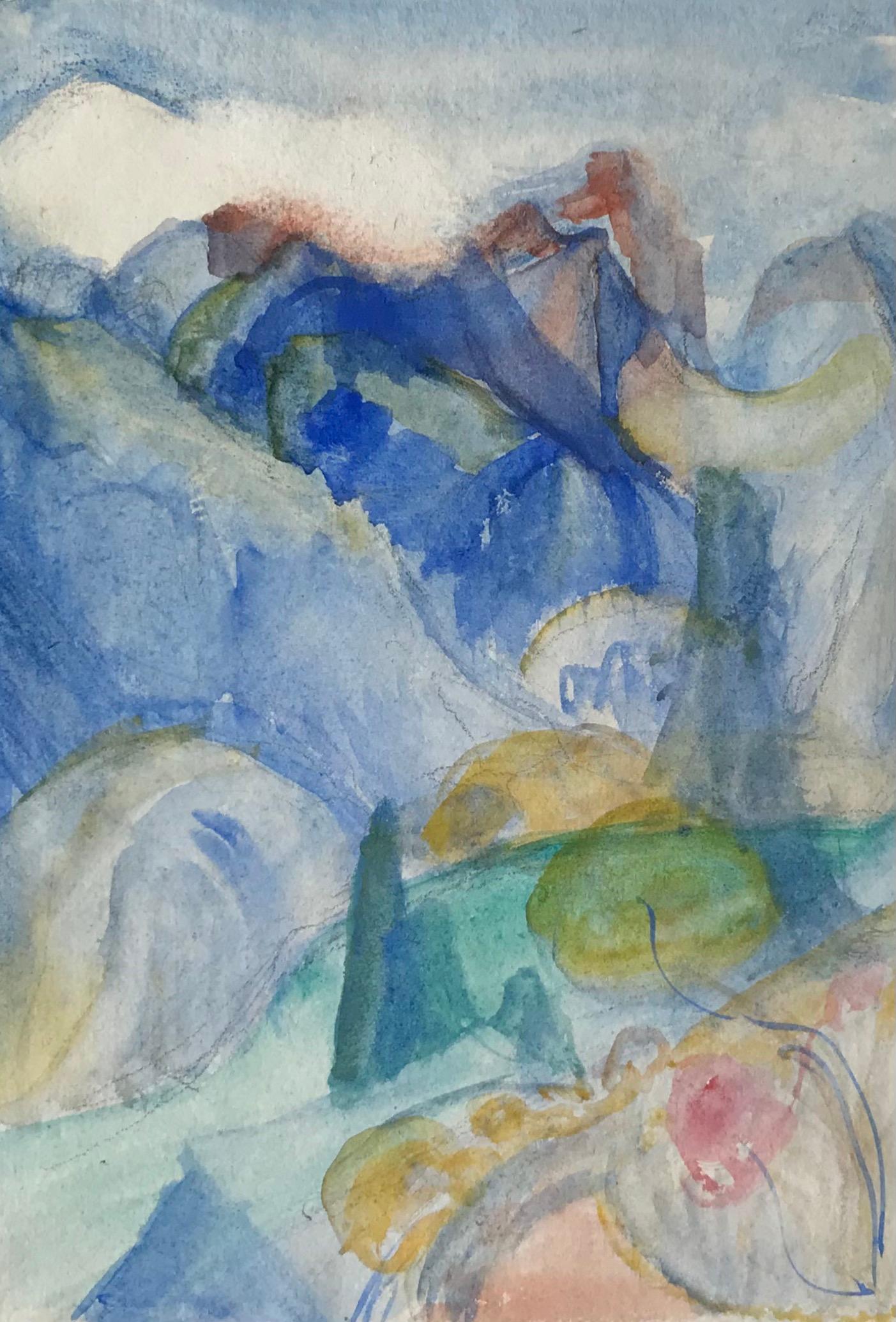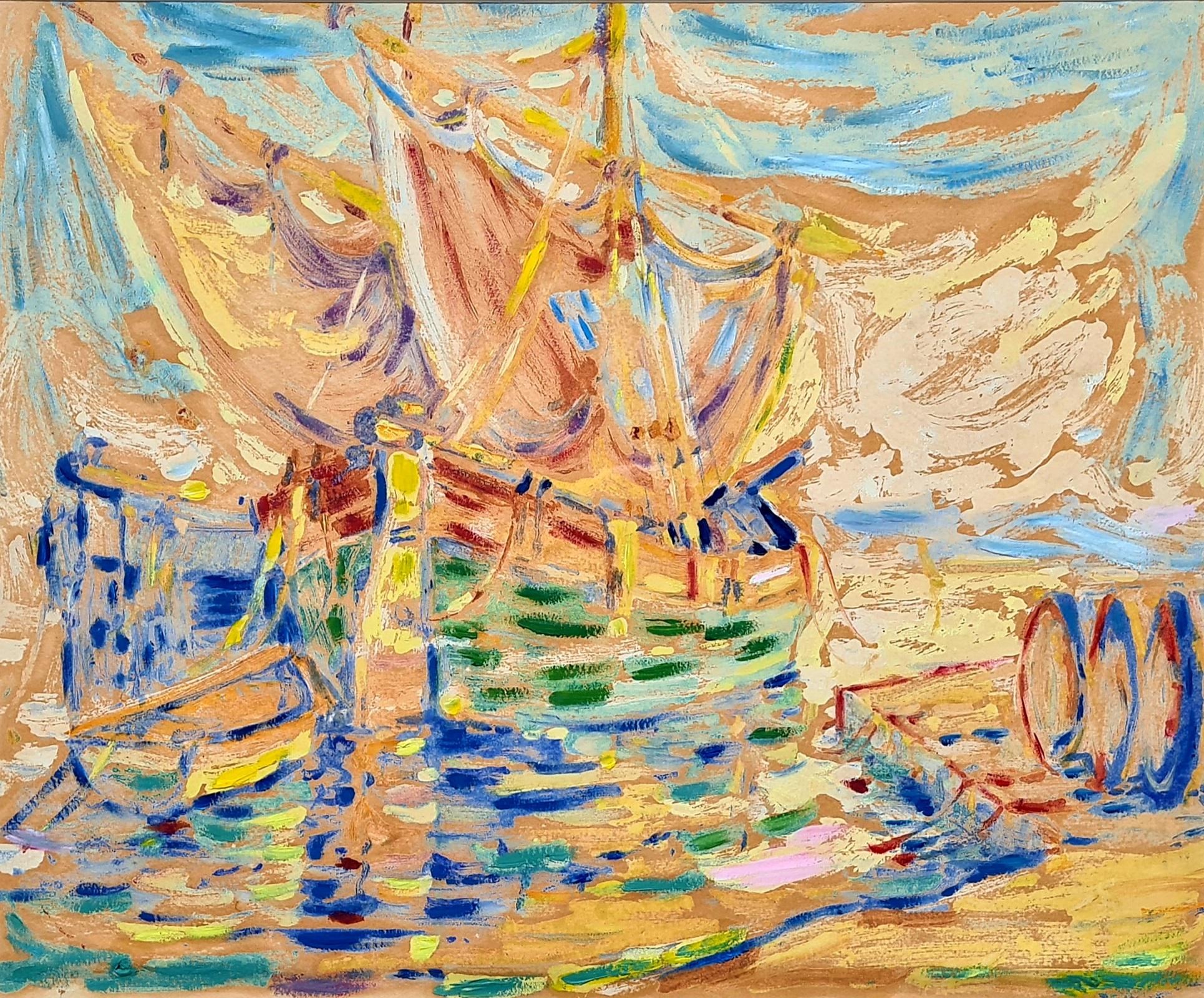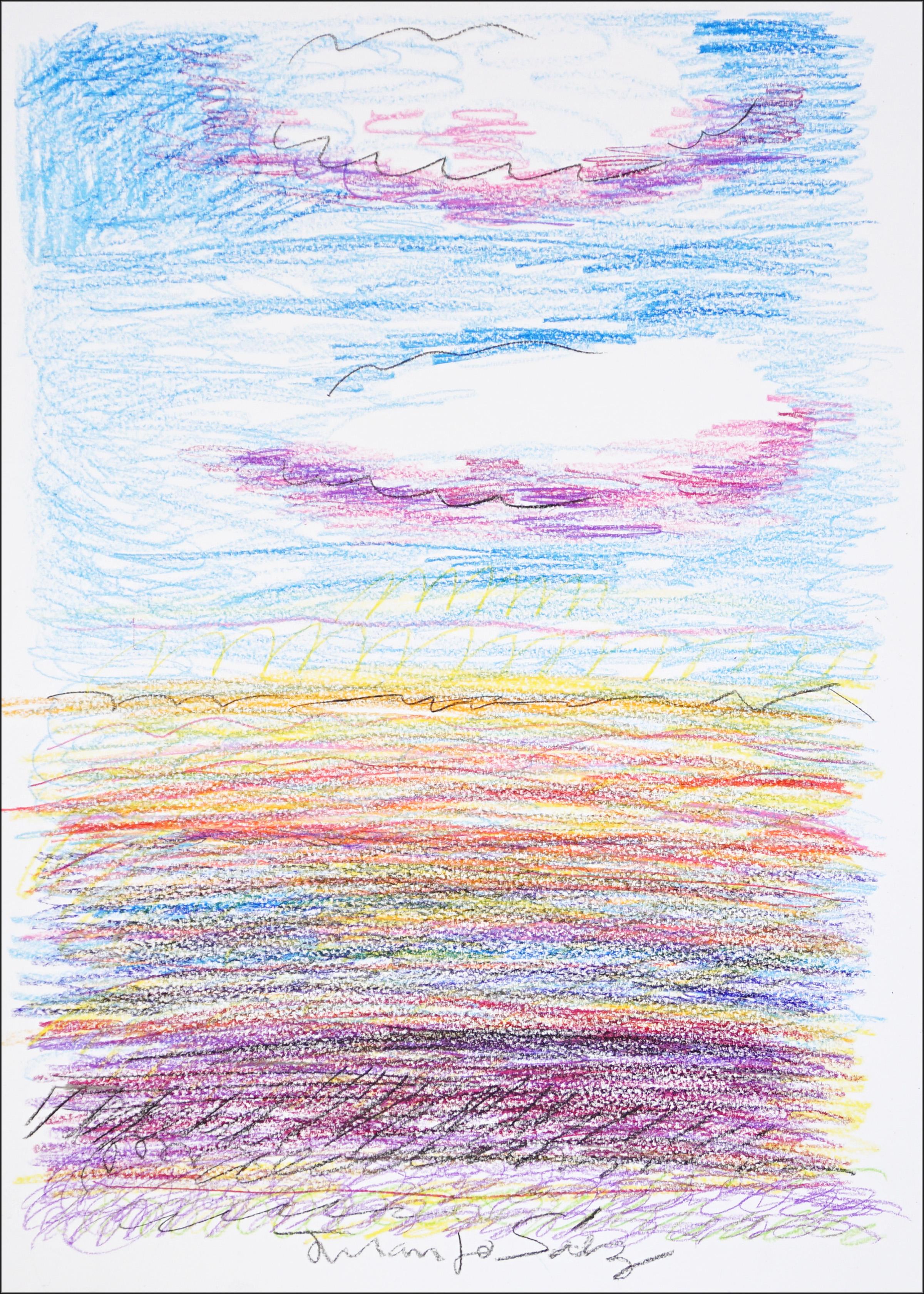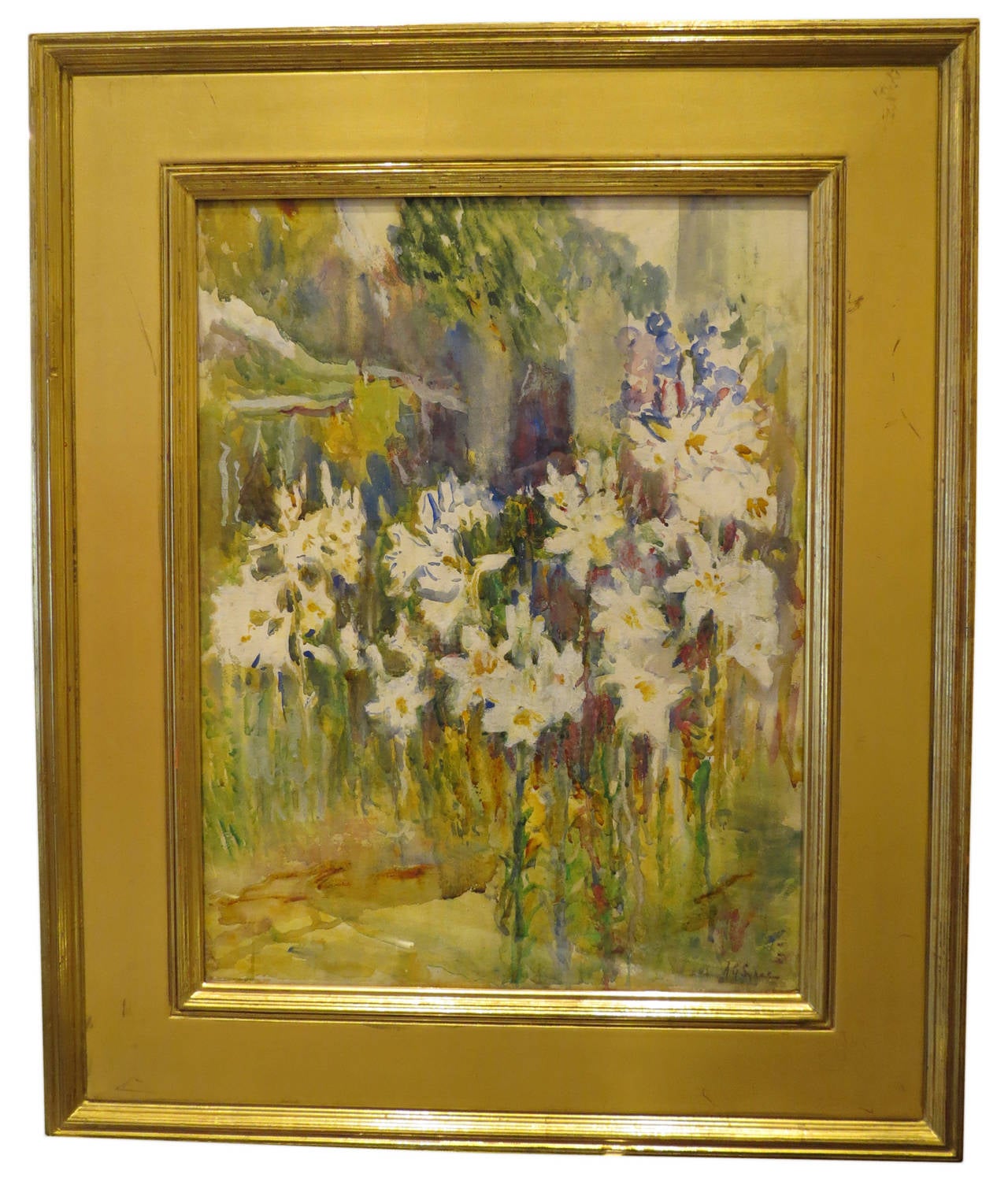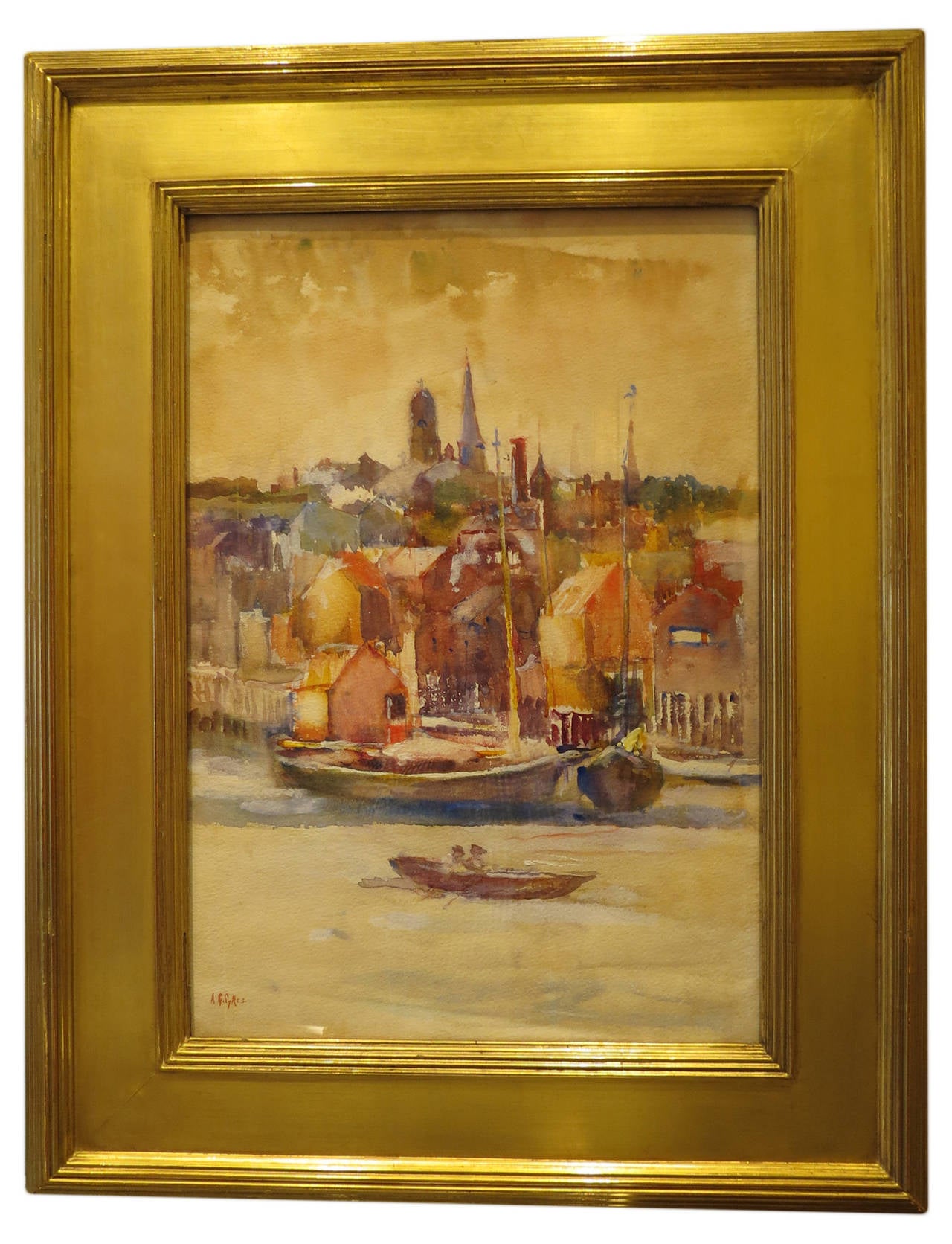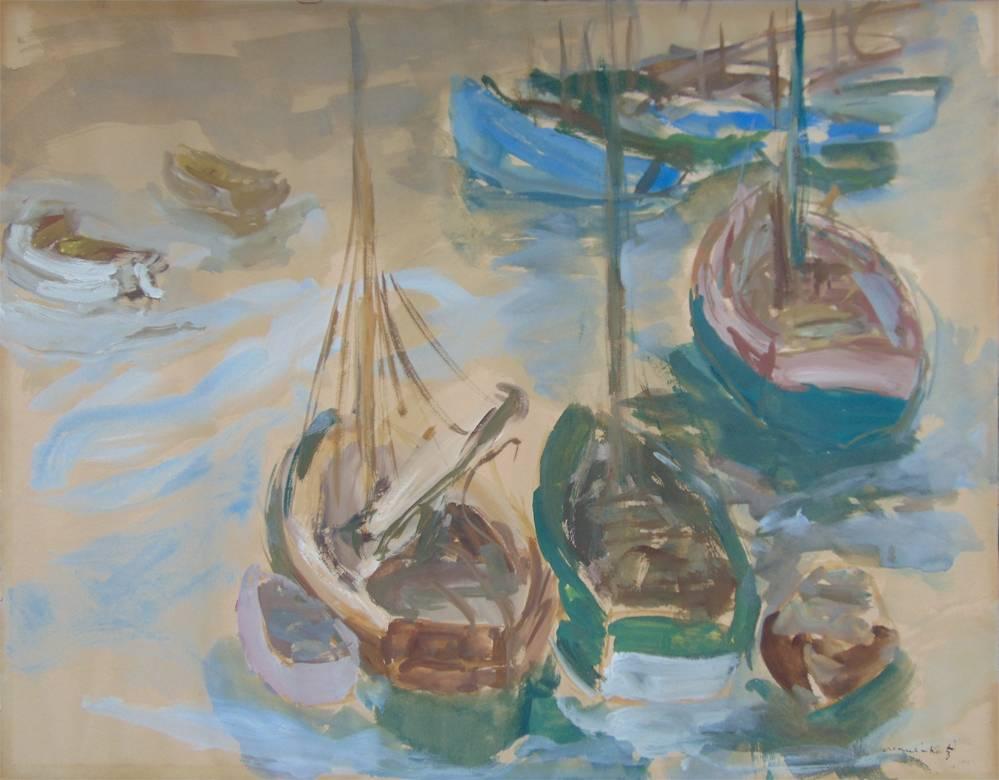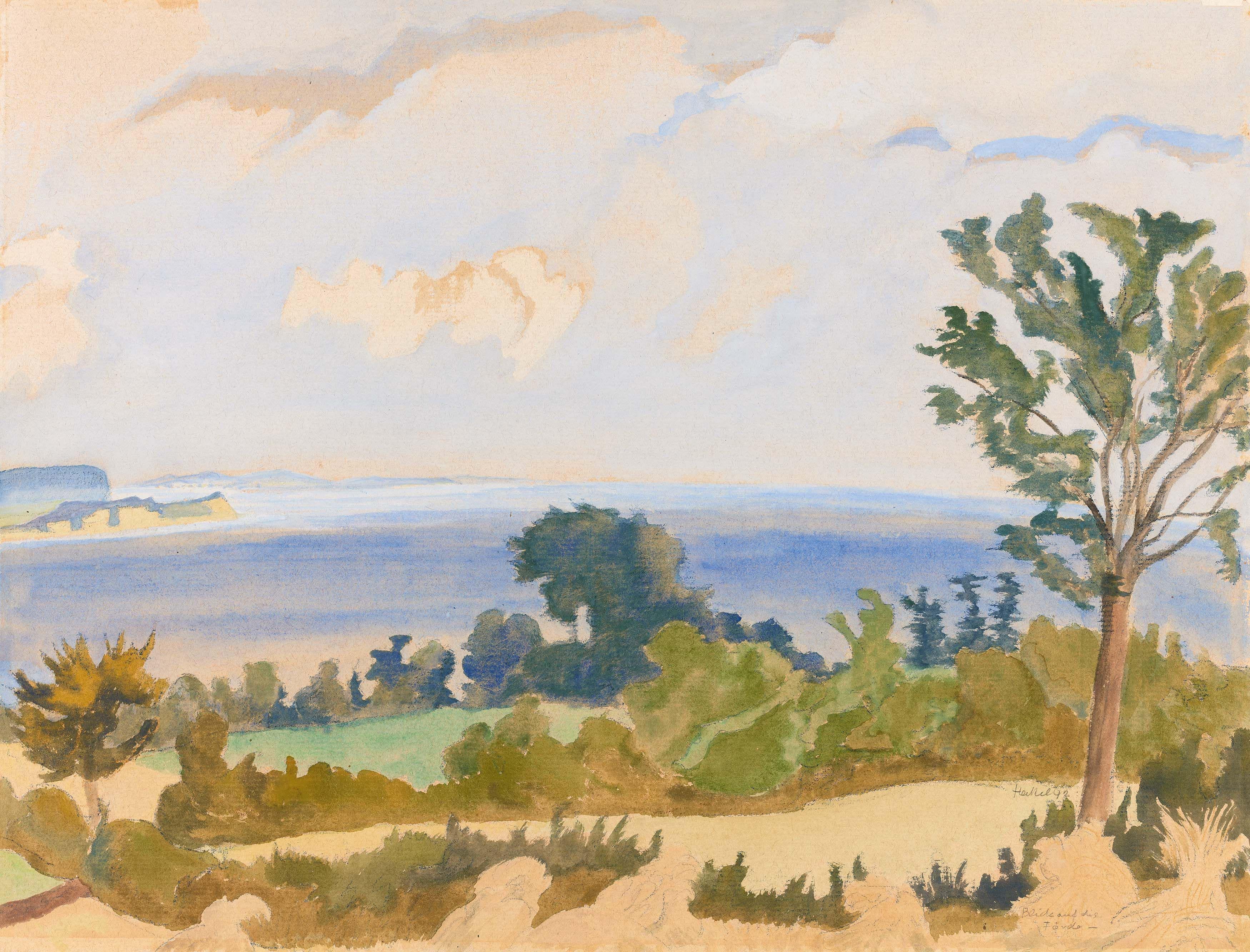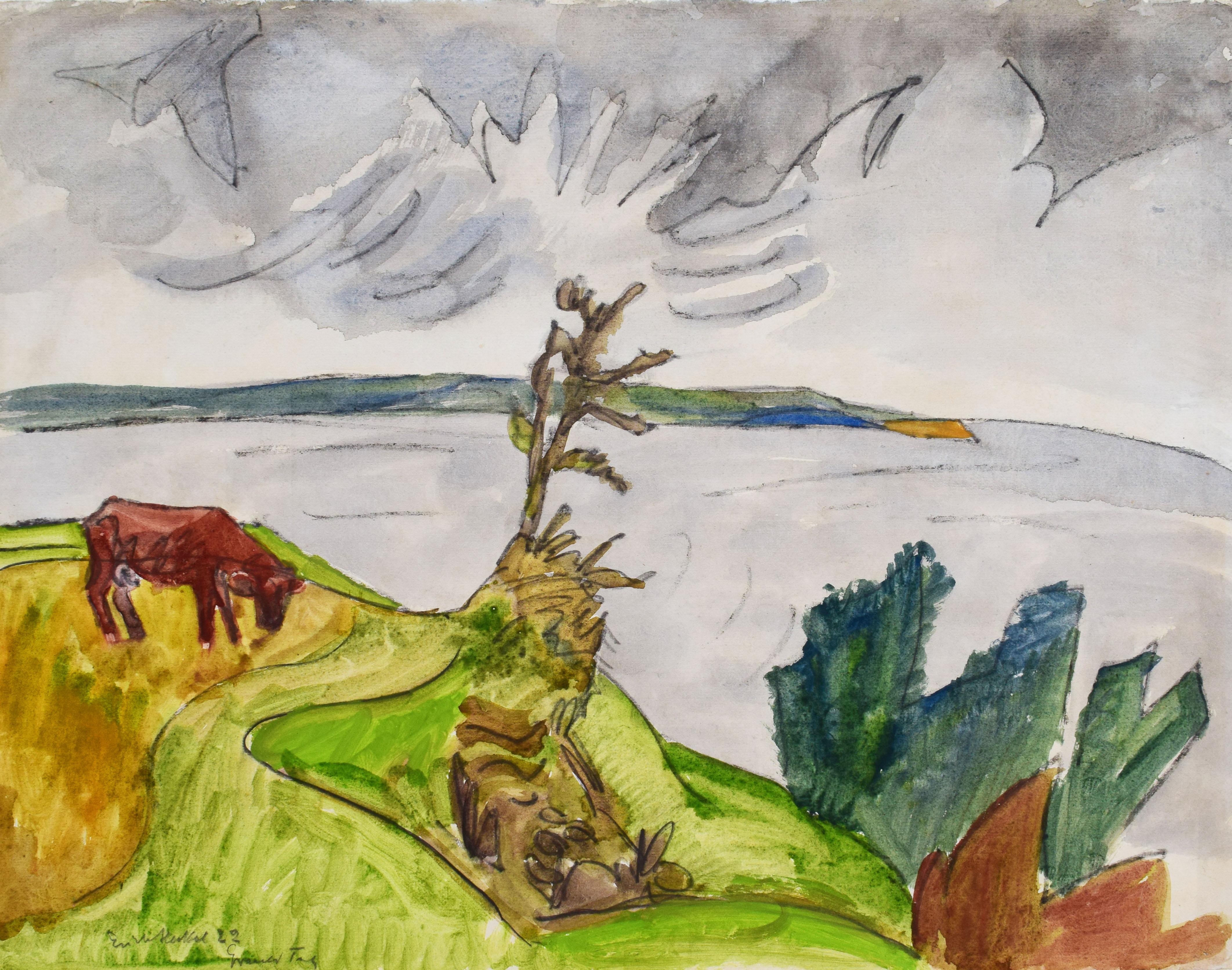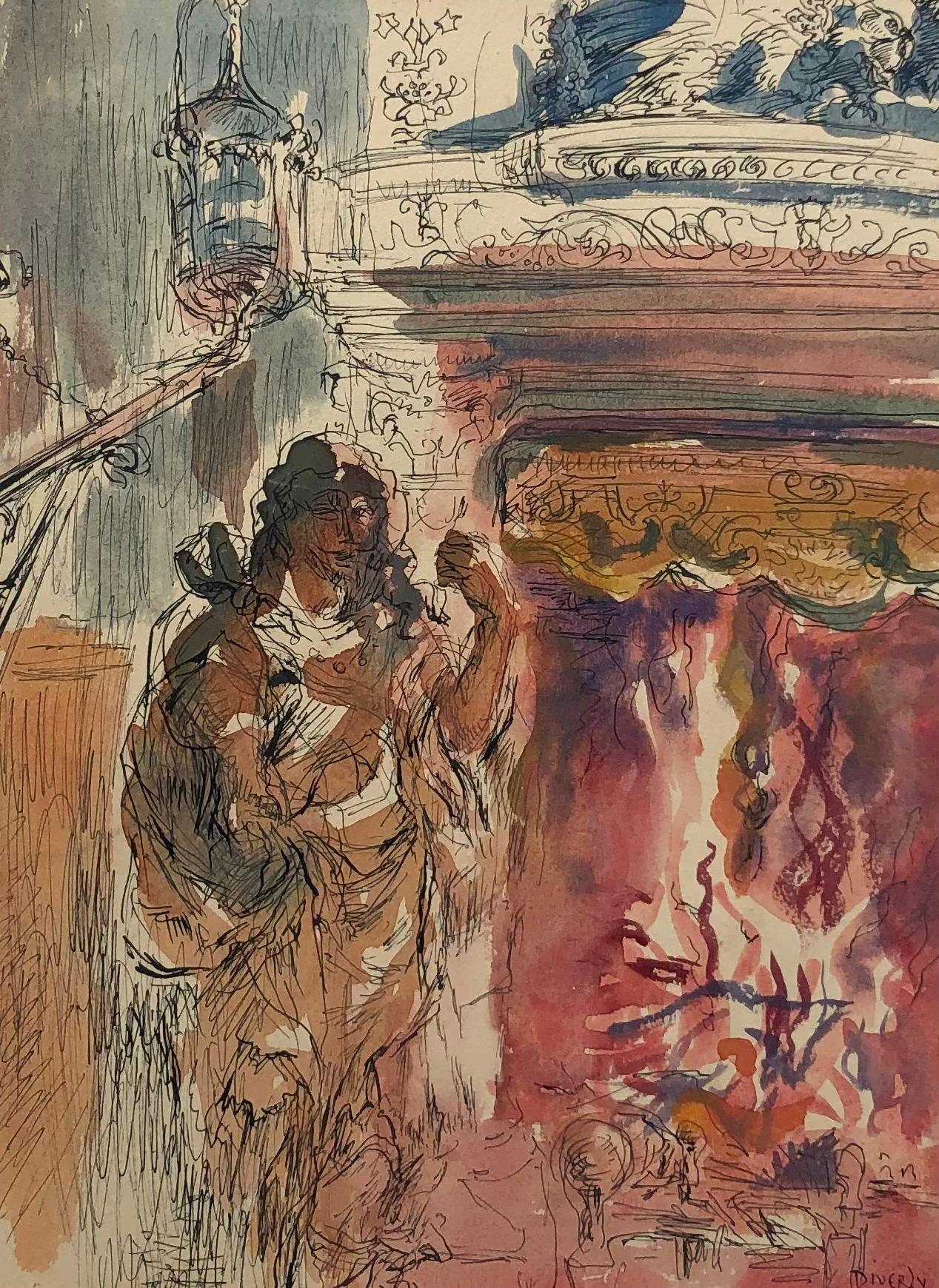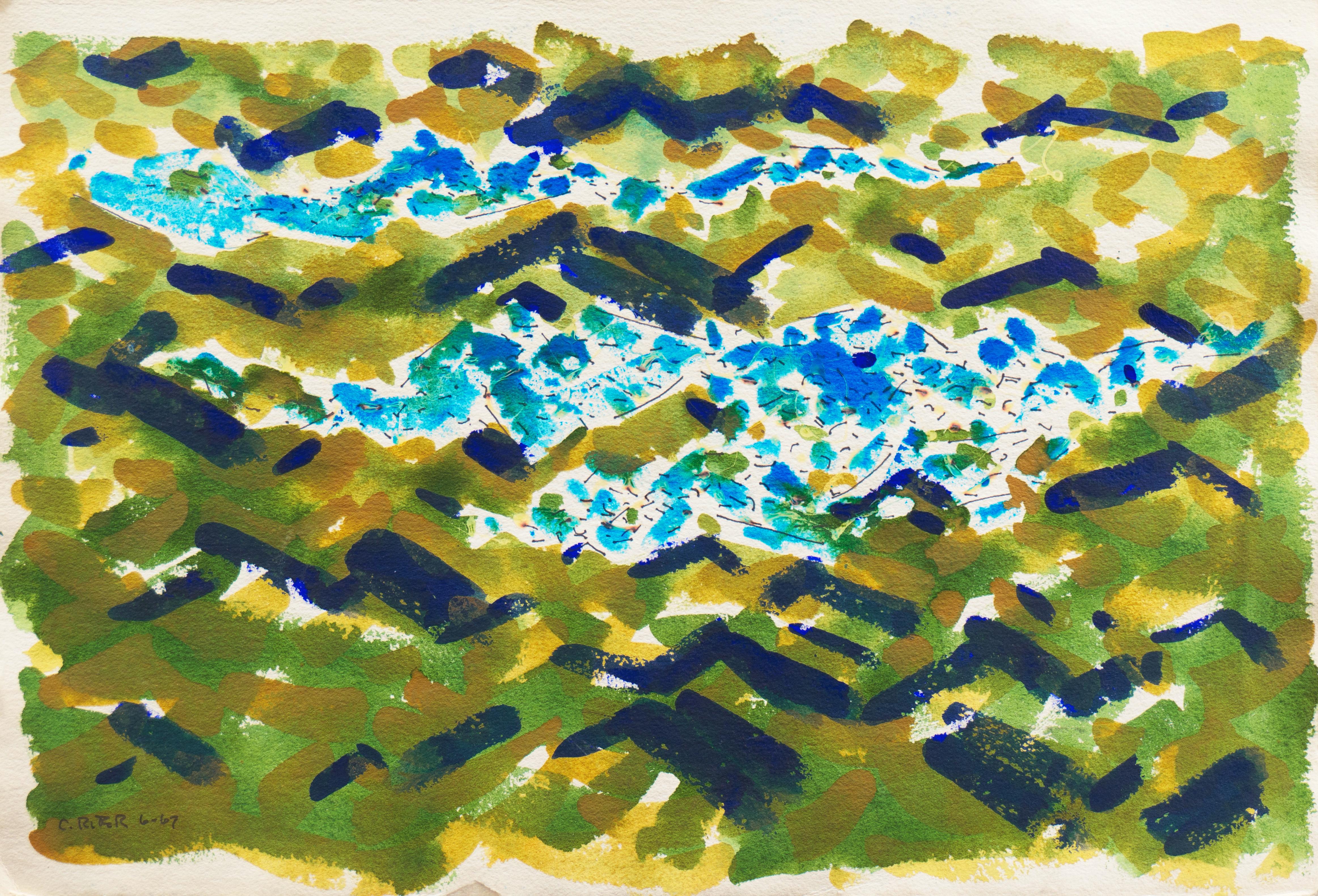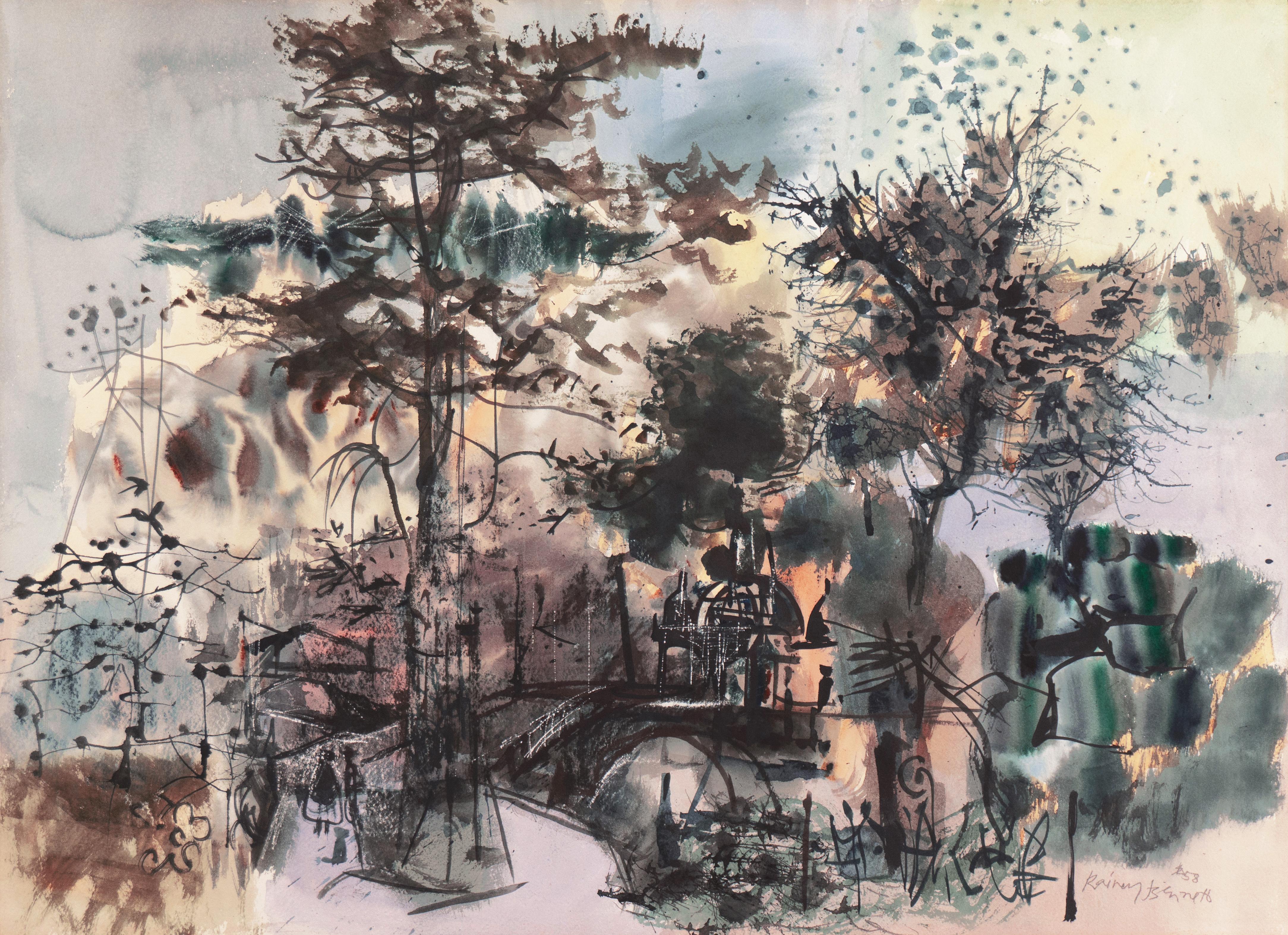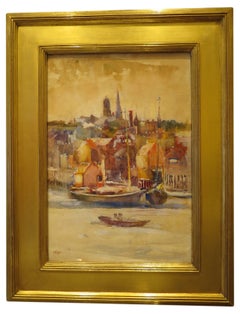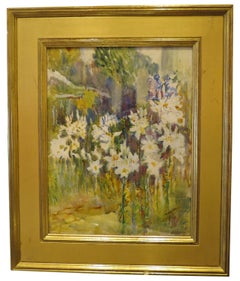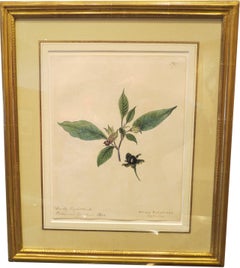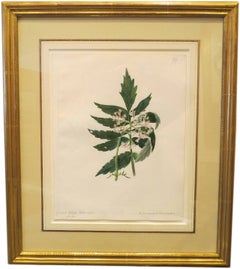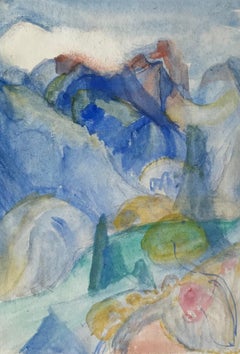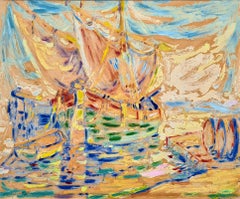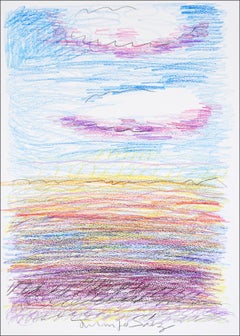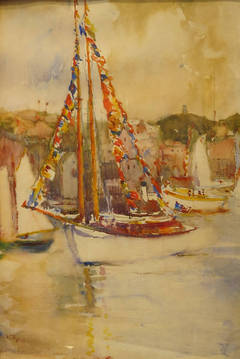
"Sailboat With Semaphore Flags"
View Similar Items
Want more images or videos?
Request additional images or videos from the seller
1 of 11
Annie Gooding Sykes"Sailboat With Semaphore Flags"?
?
Price:$5,500
$10,850List Price
About the Item
- Creator:Annie Gooding Sykes (1855-1931, American)
- Creation Year:?
- Dimensions:Height: 21 in (53.34 cm)Width: 14 in (35.56 cm)
- Medium:
- Movement & Style:
- Period:
- Condition:
- Gallery Location:Lambertville, NJ
- Reference Number:Seller: PB7001stDibs: LU157412742
About the Seller
5.0
Vetted Professional Seller
Every seller passes strict standards for authenticity and reliability
1stDibs seller since 2013
13 sales on 1stDibs
Authenticity Guarantee
In the unlikely event there’s an issue with an item’s authenticity, contact us within 1 year for a full refund. DetailsMoney-Back Guarantee
If your item is not as described, is damaged in transit, or does not arrive, contact us within 7 days for a full refund. Details24-Hour Cancellation
You have a 24-hour grace period in which to reconsider your purchase, with no questions asked.Vetted Professional Sellers
Our world-class sellers must adhere to strict standards for service and quality, maintaining the integrity of our listings.Price-Match Guarantee
If you find that a seller listed the same item for a lower price elsewhere, we’ll match it.Trusted Global Delivery
Our best-in-class carrier network provides specialized shipping options worldwide, including custom delivery.More From This Seller
View All"Seaside Village"
By Annie Gooding Sykes
Located in Lambertville, NJ
One of several prominent women associated with the artistic life of Cincinnati at the turn of the century, Annie G. Sykes was recognized for her colorful, Impressionist-inspired watercolors. Throughout her long and successful career, she explored a variety of themes ranging from landscapes, flowers and the figure to the picturesque scenery of New England, Europe and Bermuda.
Sykes was born Annie Sullings Gooding in Brookline, Massachusetts. Her father, Josiah Gooding, was a silversmith and engraver, and her mother, Ann, was a gifted needle-worker. Stimulated by the example of her parents, Sykes developed an interest in art during her childhood, honing her skills as a draftsman in art classes at school by drawing flowers, trees and other natural forms. She initiated her formal studies at the Lowell Institute in Boston in 1875, attending drawing classes there until 1878, when she enrolled at the school of the Museum of Fine Arts. Sykes is believed to have studied at the museum school until her marriage to Gerritt Sykes in 1882.
Following her nuptials, Sykes and her husband moved to Cincinnati, at that time a flourishing cultural center dubbed the "Queen City of the West." While Gerritt and a friend established the Franklin School for boys, Sykes continued to follow her artistic inclinations. Desirous of refining her skills, she enrolled at the Cincinnati Art Academy in 1884. Throughout the next ten years, she continued her training under such noted American painters as Frank Duveneck and Thomas Satterwhite Noble. Although she occasionally worked in oil, watercolor became Sykes' favorite medium of expression.
Despite the birth of two children--Milly in 1885 and Anne in 1888--Sykes successfully balanced the demands of home and family with her professional aspirations. She began contributing to the annual exhibitions of the Boston Art Club in 1890 and the New York Watercolor Club the following year. In 1892, she became a charter member of the Woman's Art Club of Cincinnati, where she would exhibit regularly until 1923.
In 1895, Sykes had her first solo show at the Traxel & Maas Gallery in Cincinnati, exhibiting a group of her watercolors. Local critics praised her fresh, vibrant colors and her spontaneous technique, and in a review in the Cincinnati Enquirer she was identified as representing "the new school of impressionism." Sykes's longstanding relationship with the Cincinnati Art Museum began that same year, when she first participated in that institution's annual shows. Indeed, between 1895 and 1926, she would exhibit there on forty-two occasions. Sykes also had a show (with Emma Mendenhall) at the Cinncinati Art Museum in 1908, and a three-person exhibition (with Emma Mendenhall and Dixie Selden) two years later.
Sykes's work was also featured in the annual watercolor shows at the Art Institute of Chicago, the Philadelphia Water Color Club and the Ohio Water Color Society. Her numerous professional affiliations included the National Association of Women Painters and Sculptors in New York and the Cincinnati Museum Association. Her standing among her peers was such that she was often invited to serve juries of selection, along with such eminent painters as Duveneck, Noble, Maurice Prendergast and Edward Redfield.
Prior to 1900, Sykes' was active in and around Boston, Cincinnati, and in Nonquitt, Massachusetts, where her family had a summer home. After the turn of the century, she spent many summers in Cape Porpoise...
Category
20th Century Expressionist Landscape Drawings and Watercolors
Materials
Watercolor
"Lillies in Bloom"
By Annie Gooding Sykes
Located in Lambertville, NJ
One of several prominent women associated with the artistic life of Cincinnati at the turn of the century, Annie G. Sykes was recognized for her colorful, Impressionist-inspired watercolors. Throughout her long and successful career, she explored a variety of themes ranging from landscapes, flowers and the figure to the picturesque scenery of New England, Europe and Bermuda.
Sykes was born Annie Sullings Gooding in Brookline, Massachusetts. Her father, Josiah Gooding, was a silversmith and engraver, and her mother, Ann, was a gifted needle-worker. Stimulated by the example of her parents, Sykes developed an interest in art during her childhood, honing her skills as a draftsman in art classes at school by drawing flowers, trees and other natural forms. She initiated her formal studies at the Lowell Institute in Boston in 1875, attending drawing classes there until 1878, when she enrolled at the school of the Museum of Fine Arts. Sykes is believed to have studied at the museum school until her marriage to Gerritt Sykes in 1882.
Following her nuptials, Sykes and her husband moved to Cincinnati, at that time a flourishing cultural center dubbed the "Queen City of the West." While Gerritt and a friend established the Franklin School for boys, Sykes continued to follow her artistic inclinations. Desirous of refining her skills, she enrolled at the Cincinnati Art Academy in 1884. Throughout the next ten years, she continued her training under such noted American painters as Frank Duveneck and Thomas Satterwhite Noble. Although she occasionally worked in oil, watercolor became Sykes' favorite medium of expression.
Despite the birth of two children--Milly in 1885 and Anne in 1888--Sykes successfully balanced the demands of home and family with her professional aspirations. She began contributing to the annual exhibitions of the Boston Art Club in 1890 and the New York Watercolor Club the following year. In 1892, she became a charter member of the Woman's Art Club of Cincinnati, where she would exhibit regularly until 1923.
In 1895, Sykes had her first solo show at the Traxel & Maas Gallery in Cincinnati, exhibiting a group of her watercolors. Local critics praised her fresh, vibrant colors and her spontaneous technique, and in a review in the Cincinnati Enquirer she was identified as representing "the new school of impressionism." Sykes's longstanding relationship with the Cincinnati Art Museum began that same year, when she first participated in that institution's annual shows. Indeed, between 1895 and 1926, she would exhibit there on forty-two occasions. Sykes also had a show (with Emma Mendenhall) at the Cinncinati Art Museum in 1908, and a three-person exhibition (with Emma Mendenhall and Dixie Selden) two years later.
Sykes's work was also featured in the annual watercolor shows at the Art Institute of Chicago, the Philadelphia Water Color Club and the Ohio Water Color Society. Her numerous professional affiliations included the National Association of Women Painters and Sculptors in New York and the Cincinnati Museum Association. Her standing among her peers was such that she was often invited to serve juries of selection, along with such eminent painters as Duveneck, Noble, Maurice Prendergast and Edward Redfield.
Prior to 1900, Sykes' was active in and around Boston, Cincinnati, and in Nonquitt, Massachusetts, where her family had a summer home. After the turn of the century, she spent many summers in Cape Porpoise...
Category
20th Century Expressionist Landscape Drawings and Watercolors
Materials
Watercolor
"Deadly Nightshade - Atropa Belladonna"
By Emily Stackhouse
Located in Lambertville, NJ
A Collection of Botanical Watercolours: Drawings of British Plants
Emily Stackhouse (1811-1870) perfectly illustrates the Victorian fascination with the countryside in this remark...
Category
19th Century Other Art Style Landscape Drawings and Watercolors
Materials
Paper, Watercolor
"Great Wild Valerian"
By Emily Stackhouse
Located in Lambertville, NJ
A Collection of Botanical Watercolours: Drawings of British Plants
Emily Stackhouse (1811-1870) perfectly illustrates the Victorian fascination with the countryside in this remark...
Category
19th Century Other Art Style Landscape Drawings and Watercolors
Materials
Paper, Watercolor
"Common Cotton Grass - Eriophorum Angustifolium
By Emily Stackhouse
Located in Lambertville, NJ
A Collection of Botanical Watercolours: Drawings of British Plants
Emily Stackhouse (1811-1870) perfectly illustrates the Victorian fascination with the countryside in this remark...
Category
19th Century Naturalistic Landscape Drawings and Watercolors
Materials
Paper, Watercolor
"Moth Mullein-Verbascum Blattaria"
By Emily Stackhouse
Located in Lambertville, NJ
A Collection of Botanical Watercolours: Drawings of British Plants
Emily Stackhouse (1811-1870) perfectly illustrates the Victorian fascination with the countryside in this remark...
Category
19th Century Naturalistic Landscape Drawings and Watercolors
Materials
Paper, Watercolor
You May Also Like
'Venice, Lagoon in morning Haze', mixed media on paper. Circa 2007.
Located in Frome, Somerset
View of the Guideca looking at the Ducal Palace and Saint Marks in morning haze light.. A Capriccio mooded piece to capture the essence of experience of Venice. Gradwell's raison d'e...
Category
20th Century Expressionist Landscape Paintings
Materials
Watercolor
Swiss Mountain by Karl Speglitz - Watercolor 13x17 cm
Located in Geneva, CH
Work on paper
Dimension with pass
31.7 x 24 cm
Category
1940s Expressionist Landscape Drawings and Watercolors
Materials
Watercolor
$136 Sale Price
20% Off
French Fauvist Gouache of Sailing Boats in Port Under a Setting Sun.
Located in Cotignac, FR
Watercolour and gouache on paper of sailing boats at a quay side. The painting is signed bottom right but as yet undeciphered and dated 1945. Presented in a patinated wood custom fra...
Category
Mid-20th Century Expressionist Landscape Drawings and Watercolors
Materials
Watercolor, Gouache, Paper
$758 Sale Price
20% Off
Two Clouds, Expressionist Drawing on Watercolor Paper, Skyscape, Naïf Landscape
Located in Barcelona, ES
This is a beautiful expressionist style drawing by Juanjo Saez. Juanjo's pictorial work is an exploration of color, texture, and movement, creating vibrant compositions that capture ...
Category
2010s Expressionist Landscape Drawings and Watercolors
Materials
Paper, Wax Crayon, Watercolor
Boats in the Harbour - Seaside Maritime
By Mane Katz
Located in London, GB
MANE KATZ [Katz Emmanuel] 1894-1962
Kremenchug, Ukraine 1894-1962 Tel Aviv (Russian / Ukrainian / French / Israeli)
Title: Boats in the Harbour, circa 1938
Technique: Original...
Category
1930s Expressionist Landscape Drawings and Watercolors
Materials
Gouache
View of the Fjord Blick auf die Förde - Landscape Fjord Germany
By Erich Heckel
Located in London, GB
This watercolour is hand signed and dated in pencil by the artist "Heckel 42" [1942] in the lower right image.
It is also hand titled in pencil “Blick auf die Förde” in the lower ri...
Category
1940s Expressionist Landscape Drawings and Watercolors
Materials
Paper, Watercolor, Pencil
